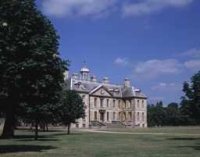Stately Homes
BritainÂ’s stately homes are a part of our history, albeit an exclusive part. Their landscaped gardens and parks offer a view of that history, or just the chance for the kids to run off some energy. Some like
Wimpole Hall near
Cambridge even offer period food to complete the experience.
Our stately homes provide snapshots of history:
Calke Abbey near
Derby shows how fortunes of the great can decline;
Blickling Hall, the Boleyn family home near
Aylsham in
Norfolk with its superb library and gardens shows how the elite in Tudor times were becoming cultured; Florence Court in
Enniskillen, a magnificent Georgian pile, shows the Irish aristocracy isolated, yet still Irish with local furniture abounding.
So many stately homes have enormous gardens to enjoy, and these days other pleasures within them –
Belton House near
Grantham has a fantastic adventure playground; Erddig near Wrexham has woodland walks plus the national collection of ivies;
Somerleyton Hall near
Lowestoft has a marvellous maze.
But it is the ostentation, the grandeur, that most want to see.
Castle Howard in Yorkshire would be a good place to start.
Kedleston Hall near
Derby has some of the best Adam interiors in England; and
Berrington Hall in
Herefordshire with its
Capability Brown gardens shows the wealth of the elite, able to alter the face of the earth.
While most stately homes were built in the 18th century when fortunes were being made(in the colonies - and from slavery), the timescale runs from medieval times – take
Clevedon court in North
Somerset – to the Victorian era –
Lanhydrock in
Bodmin being a good example.
Visiting a stately home is one of our great day trip traditions, and getting better all the time. With the country dotted with them, you donÂ’t even need to venture far from home.
We also include 1000's of
Historic Houses
Brit Quote:
Oh, what a shock. My career must be slipping. This is the first time I've been available to pick up an award. - Michael Caine
More Quotes
|
|
On this day:
Luther Posts His 95 Theses - 1517, Sherlock Holmes 1st Published - 1892, The Worcesters Charge at Ypres - 1914, Official end of the Battle of Britain - 1940, Huddersfield Factory Fire - 1941, Zebra Crossing Introduced - 1951
More dates from British history
|

